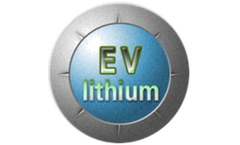Rechargeable Lithium Battery Articles & Analysis: Older
9 articles found
Lithium-Ion Batteries Explained Li-ion batteries have changed the way people store energy. ...
LiFePO4 Battery (LFP Battery) has the full name of lithium iron or Lithium Ferro Phosphate battery. It is a high-power lithium-ion rechargeable battery for energy storage, EV, electric tools, yacht, and solar systems that uses lithium iron ...
Rechargeable lithium-metal batteries have been the subject of intense research for decades, and today they seem closer than ever to reaching the marketplace. ...
Lithium-Ion Batteries Rechargeable lithium-ion (“li-ion”) batteries (comprised of cells in which lithium ions move from a negative electrode through an electrolyte to a positive electrode during discharge—and the other way around when charging) were first described conceptually ...
The Beginning of the Lithium Battery For many years, the only suitable battery for portable equipment, such as mobile computing and wireless communications was nickel-cadmium. Pioneer work on the lithium battery began in 1912, however it wasn’t until the 1970s when the first ...
Tesla’s Powerwall, for instance, uses rechargeable lithium-ion batteries for stationary energy storage that can power your home through the sun’s rays. ...
All instruments use custom made alkaline battery packs, except the LISST-Portable with touch panel display and the LISST-Portable|XR that uses rechargeable Lithium-Ion (Li-ion) batteries. Older versions of the LISST-Portable uses rechargeable Nickel Metal-Hydride (NiMH) batteries. The ...
Described by its creators as "an airborne laboratory," the single-seat Solar Impulse 2 has 17,248 ultra-efficient solar cells that transfer solar energy to four electrical motors that power the plane's propellers. The cells also recharge four lithium polymer batteries to power the plane at night. At around 2,300 kilograms (5,070 pounds), the ...
A novel portable fuel fired cylindrical thermophotovoltaic battery charger is described. It uses an array of GaSb TPV cells along with a novel Omega recuperator design and a novel IR emitter design. ...









